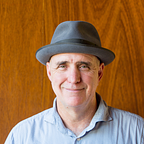The Creative Flow of Falling Water.
My newsletter last week prompted a comment from a reader reminding me about the story behind the design of Frank Lloyd Wright’s Fallingwater in Pennsylvania. 1
The story goes that Edgar Kaufmann commissioned Wright to design a holiday home in Southern Pennsylvania. Wright took his staff (comprised of students who paid to work for him, which included farm work), for a site visit. After the trip, they built a detailed site model and produced plans and sections of the site for reference material.
Then Wright set about doing seemingly nothing, except studying the model and the drawings. Nine months later, Kaufmann ran to enquire about the progress of the design, to which Wright replied that it was finished.
OK, said Kaufmann, I am leaving now and will be there in 3 or 4 hours.
Wright then sat at his drawing board and in the time it took for the client to drive the 140 miles, he designed the most famous house in the world.
Despite the client’s initial shock that Wright had totally ignored his request about a particular spot he wanted the house sited, and had instead placed it over the top of the waterfall, the rest is, as they say, history.
Frank Lloyd Wright had an incredible capacity to hold complex spaces in his mind and then was able to let the concept flow onto the paper. He was clearly a genius and had a unique conceptual ability.
When I started to write, I researched writers’ techniques and writing habits, only to learn that every writer has their own unique blend of rituals and routines. But the habit of Hans Selye, the father of stress science, caught my attention.
Selye would allow himself a half hour’s “conversation … between my conscious and unconscious self” before getting out of bed. 2
He would then sit at his desk from 6.30 for two hours, writing. Of all the things I have learnt about writing, this has been the most useful, and a sort of a quick language-based version of Wright’s design gestation process.
I lie in bed mulling over the subject, writing in my head. And if I can get myself out of bed and straight to the keyboard, the majority of the words seem to pour out, with myself almost an observer. If I miss that opportunity, I struggle to get any writing done during the day. The thing is that the act of starting is like turning on a tap. The ideas and words have been dammed up in my mind, and one follows the other and they just start to flow.
For a bigger project, I will repeat this process for a few days or a week before I commit to starting the work.
I call it prepcrastination.
Of all the things I have learnt about creativity over the years, this is a biggie. Creativity, whether it be in an artistic sense, or applied to life or work, needs time. While we mere mortals might not be able to store complex spatial ideas or the science of stress in our heads, we can all benefit to take some time to think before we create.
Postscript.
As a young architect, it was always drummed into me about the dangers of flat roofs and box gutters, as I was told that never wanted that dreaded phone call from a client. I have a leak. Whether it was his fame, reputation or just pure arrogance, Frank Lloyd Wright had his own way of dealing with that particular phone call. When Mrs Kaufmann called him to complain about water leaking onto the dining room table at Fallingwater, he advised.
Madam, may I suggest you buy an umbrella!
I am a speaker, writer, artist, and recovering architect.
My latest talk is CREATIVE TORQUE.
Less tension, more creative torque.
sign up for the newsletter
2 Pang, Alex Soojung-Kim. Rest: Why You Get More Done When You Work Less (pp. 80–81). Penguin Books Ltd. Kindle Edition.”
